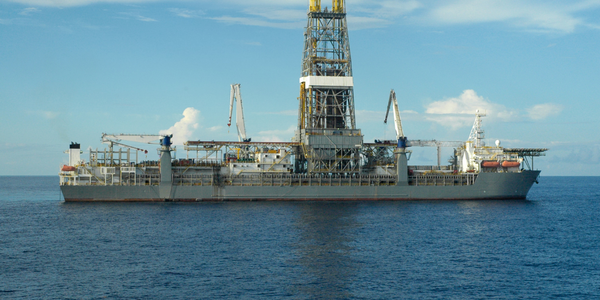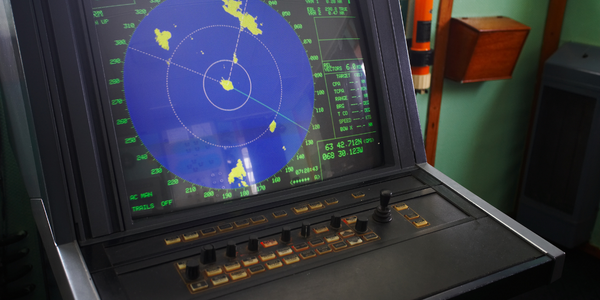Download PDF
Maximizing fleet availability and boosting profitability
Technology Category
- Functional Applications - Enterprise Asset Management Systems (EAM)
Applicable Industries
- Marine & Shipping
Applicable Functions
- Maintenance
Use Cases
- Predictive Maintenance
- Remote Asset Management
Services
- System Integration
The Challenge
Royal Boskalis Westminster N.V., a leading services provider for the dredging, maritime infrastructure and maritime services sectors, faced the challenge of carrying out essential maintenance in a time- and cost-effective way. The company operates more than 300 vessels in five continents, and the sand and salt water environments in which it operates could significantly shorten the lifespans of its multi-million dollar equipment. To meet its commercial objectives, the company aimed to complete essential maintenance tasks quickly and efficiently. However, managing such a large fleet spread across multiple locations was a complex process. The company aimed to improve asset reliability by transitioning from a reactive to a preventative maintenance model.
About The Customer
Founded in 1910 and employing 8,500 people, Royal Boskalis Westminster N.V. is a leading global services provider operating in the dredging, maritime infrastructure and maritime services sectors. Its clients include governments, port operators, oil, gas and power companies and shipping companies. For enterprises with asset portfolios that attract substantial operational costs, profitability depends on keeping downtime to a minimum. This was the situation facing Royal Boskalis Westminster N.V. To meet its commercial objectives, the company aims to complete essential maintenance tasks quickly and efficiently—but managing more than 300 vessels in five continents is a complex process.
The Solution
To drive better insight into its extensive asset base and maximize asset uptime, Boskalis uses IBM Maximo Asset Management software to manage its end-to-end maintenance processes in a single, centralized solution. The company uses the Maximo solution together with SRO Data Replicator (SDR) software from IBM Premier Business Partner SRO Solutions. This combination ensures that Boskalis can effectively manage even its most remote vessels. The SDR solution enables Boskalis to connect IBM Maximo instances on its ships to its central asset database on shore in near-real time, even over tenuous internet connections.
Operational Impact
Quantitative Benefit
Related Case Studies.

Case Study
Drill ship power challenge: hybrid solution solves distribution issues
Aspin Kemp & Associates (AKA), a manufacturer of electrical power and control systems headquartered in Montague, PEI, encountered one with its hybrid power initiative, the first hybrid drill floor destined for installation on ultra-deepwater drill ships operated by Transocean, Swiss offshore drilling contractors. Since on-site modification was impossible and scrap recycling of any modifications was unacceptable, the enclosures had to arrive ready-to-install.

Case Study
Ensures Tanker Safety and Emissions Compliance
Storage tanks are irregular in shape and a certain amount of mathematical modelling is required to get an accurate representation of volume and, more importantly, the weight of material in each tank. In addition, countries have different emission regulations, so the ships position needed to be accurately known in order to geotag emission data.

Case Study
Real-time Networked Sonar System for Ships
A multinational, knowledge-based corporation that delivers marine electronics solutions is utilizing industrial Ethernet technology to help ensure that operations at sea are dependable and optimal. Based in Europe, the company has nearly 4000 employees working in 20 countries around the world, and produces high-tech systems for offshore oil and gas operations, merchant marine systems, and various applications for the defense and aerospace industries. The company produces products and systems used by merchant vessels and offshore installations for positioning, navigation, automation, as well as for surveying and monitoring the seabed, and for fishing vessels and fi sheries research. As one of the major suppliers of high quality marine electronics in the world, their products include chart plotters for yachts, triple redundant dynamic positioning systems for oil drilling rigs, and sonar and instrument systems for scientifi c research vessels. Products used for marine applications must be rugged enough to endure the corrosive effects of salt water, and be able to withstand excessive amounts of vibration and shock. For this reason, the company only uses DNV and GL certified products and components to ensure that their systems can meet the high standards required by the maritime industry.

Case Study
Fleet Management Connectivity Solution for Marzam
Marzam, in order to ensure the best service, invested 3 million dollars in the construction of 2 fuel oil tanks with 40k gallons and 10k gallons capacity each, located in Manta, Ecuador. The customer needs to keep fleet operations going with fuel available at all times in order to guarantee quality of service. KEY ELEMENTS FOR THE CUSTOMER: Real-time level monitoring: Tank infrastructure remote level monitoring. Configure alerts and notifications when reaching critical values to avoid the need for emergency refills and optimize supply schedules. Real-time consumption monitoring: The customer needed an easy way to monitor in real-time accurate values of consumption.

Case Study
Mitsubishi Electric's Edge Computing Solution Powered by Wind River VxWorks
Mitsubishi Electric Corporation, a global leader in factory automation (FA) applications, identified edge computing as a critical component of the Industrial Internet of Things (IIoT). The company aimed to enhance device and data security, reduce data traffic to the cloud, and enable faster response to network or device issues. In 2018, Mitsubishi Electric launched its first line of industrial hardware products designed for edge computing, the MELIPC Series. The primary development goals for MELIPC were to support the type of edge computing promoted by Mitsubishi Electric and to introduce advanced vision technology for device control. The flagship computer of the MELIPC line, the MI5000, was designed to combine real-time equipment control with high-speed data collection, processing, diagnosis, and feedback in a single machine. However, the development team needed a real-time control platform that could seamlessly integrate real-time control with proven analytic and diagnostic applications.

Case Study
Migrating to Software-Only Licenses for More Responsive License Management
The world’s premier shipping companies work with the software solutions of ABB Marine & Ports to get their vessels safely and efficiently to their destinations. A loyal customer of Wibu-Systems for over a decade, ABB has been relying on CodeMeter dongles to store the license keys for their ABB AbilityTM Marine Advisory System - OCTOPUS.The current version of the system is using Wibu-Systems’ robust metal-case CmStick ME, a perfect choice for the rugged conditions at sea. As satellite communications has made fast Internet connections at sea a common reality for maritime operators, the company is looking to move from physical to software solutions to streamline its logistics processes.





